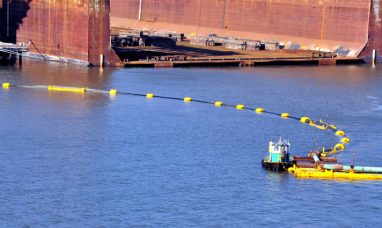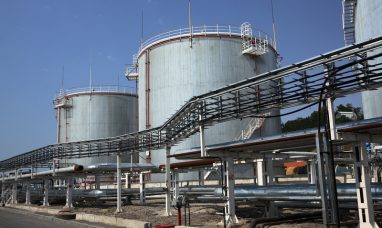- Company restored more than 380,000 customer outages as of 4 p.m.
- Approximately 1.34 million customers, mostly in western N.C. and the Upstate of S.C., remain without power and should prepare for potential multiday outages
- About 11,000 workers working quickly and safely on repairs, including additional crews from 19 states and Canada
- Customers urged to be cautious of damaged equipment, rising lake levels along the Catawba-Wateree River Basin
CHARLOTTE, N.C., Sept. 27, 2024 /PRNewswire/ — Duke Energy lineworkers, tree trimmers and other storm support workers have begun to assess damage and restore power following Helene’s historic destruction in the Carolinas. Wind damage, flooding, adverse road conditions and power outages are particularly widespread across the western portions of North Carolina and South Carolina.
As of 4 p.m.:
- Approximately 1.34 million Duke Energy customers in the Carolinas are without power. This includes nearly 703,000 customers in North Carolina and about 639,000 customers in South Carolina.
- Duke Energy has already restored more than 380,000 customer outages in the Carolinas, including roughly 281,000 in North Carolina and 99,000 in South Carolina.
Duke Energy also reports that the effects of flooding and road closures will impede efforts to restore power, especially in western North Carolina and the Upstate of South Carolina, where outages are most prevalent.
As workers continue performing damage assessments, Duke Energy said it plans to communicate additional information regarding restoration times to customers through dukeenergyupdates.com, Outage Alerts and its Outage Map.
“Helene’s winds were powerful and destructive and its rains were historic,” said Jason Hollifield, storm director for Duke Energy in the Carolinas. “We started monitoring Helene when it was first identified and prepared well in advance for its impact. Even so, the damage is extensive and it could take days to restore power to all customers.
“We have over 11,000 storm workers who are committed to doing everything possible to restore service as quickly and safely as possible. We’re also bringing in thousands of additional resources to help with power restorations in the hardest hit areas.”
Reporting a power outage
Duke Energy advises customers to report power outages via the Duke Energy app or website, by texting OUT to 57801 or by calling 800.POWERON (800.769.3766).
Power restoration process
Workers must assess the extent of storm damage before being able to restore most power outages. This process can take 24 hours or more and is necessary to determine what types of workers, equipment and supplies are needed to repair a particular outage.
Duke Energy focuses on restoring power as safely and quickly as possible and in a sequence that begins with public health and safety facilities, while also considering how to impact the greatest number of customers.
Learn more about how Duke Energy restores power.
Thousands of workers from U.S. and Canada
In advance of the storm, Duke Energy strategically staged equipment and approximately 11,000 workers – power line technicians, damage assessors and vegetation workers – at strategic locations across the Carolinas. The workforce includes Duke Energy employees and contractors normally based in the Carolinas and individuals from other electric companies in 19 U.S. states and Canada.
Safety recommendations for customers
Duke Energy asks customers to stay tuned to local news for the latest advisories from state and local emergency management officials. The company also offered these safety tips and reminders:
- Stay away from power lines that have fallen or are sagging. Consider all lines energized as well as trees, limbs or anything in contact with lines.
- If a power line falls across a car that you are in, stay in the car. If you MUST get out of the car due to a fire or other immediate life-threatening situation, do your best to jump clear of the car and land on both feet. Be sure that no part of your body is touching the car when your feet touch the ground.
- Do not walk, swim or drive through floodwaters.
- When using a power generator, always follow the manufacturer’s instructions to ensure safe and proper operation. This includes operating the generator outside in a well-ventilated area – and never inside a building or garage.
- Please watch for utility crews and turn the generator off when crews are in your area. The electrical load on the power lines can be hazardous for crews making repairs.
- If rising water threatens your home – or if you evacuate your home – turn off your power at the circuit breaker panel or fuse box.
- Electric current passes easily through water, so stay away from downed power lines and electrical wires. Don’t drive over or stand near downed power lines.
- Downed lines may be hard to see in the rain and can potentially be hidden in standing water. If you encounter large pools of standing water, stop, back up and choose another path.
- If your home or business is flooded, Duke Energy cannot reconnect power until the electrical system has been inspected by a licensed electrician. If there is damage, an electrician will need to make repairs and obtain verification from your local building inspection authority before power can be restored.
Potential flooding due to rising lake levels
Lake levels continue to rise sharply as heavy precipitation from Helene adds to the many inches of rain the region already received this week. This is especially true for the Catawba-Wateree River Basin, which is composed of a chain of 11 lakes and 12 hydroelectric stations connected by the Catawba River.
Duke Energy manages the lakes’ water levels while balancing inflows, including from events such as this. The company does this by moving water through its generating units and, where possible, operating spillway gates and flood gates. Because water management in one lake often impacts others, Duke Energy manages the river basins as an entire system.
The company began aggressively moving water through the Catawba-Wateree River Basin earlier this week in anticipation of Helene’s arrival as well as a separate weather system that dumped heavy rains in the region. Rainfall over the past 48 hours, however, has exceeded initial national and global forecasts. So, even with Duke Energy’s aggressive preparations, lake levels have risen sharply and will likely continue to rise, some to historic levels. This has increased major flooding risks in the Catawba-Wateree River Basin.
The high-water conditions can also create dangerous conditions such as floating debris and electrical hazards. Those living along lakes and rivers should move loose objects away from the shoreline to prevent additional hazards – and contact local law enforcement to report dangerous situations involving floating debris.
Duke Energy encourages communities along the Catawba-Wateree River Basin to use caution, stay informed and pay close attention to changing streamflow conditions. In addition, the company advises residents to follow the directions of state and county emergency management and watch for emergency notification messages on their mobile phones.
Company representatives are actively collaborating with local emergency management officials to ensure they are informed of any changes in water levels. Local authorities will notify residents should evacuations, road closures or electrical disconnects be necessary.
Real-time lake level information is available at duke-energy.com/lakes or by calling 800.829.LAKE (5253). Updates are also available through the Duke Energy Lake View mobile app, which is available from the App Store and Google Play.
Duke Energy
Duke Energy (NYSE:DUK), a Fortune 150 company headquartered in Charlotte, N.C., is one of America’s largest energy holding companies. The company’s electric utilities serve 8.4 million customers in North Carolina, South Carolina, Florida, Indiana, Ohio and Kentucky, and collectively own 54,800 megawatts of energy capacity. Its natural gas utilities serve 1.7 million customers in North Carolina, South Carolina, Tennessee, Ohio and Kentucky.
Duke Energy is executing an ambitious clean energy transition, keeping reliability, affordability and accessibility at the forefront as the company works toward net-zero methane emissions from its natural gas business by 2030 and net-zero carbon emissions from electricity generation by 2050. The company is investing in major electric grid upgrades and cleaner generation, including expanded energy storage, renewables, natural gas and nuclear.
More information is available at duke-energy.com and the Duke Energy News Center. Follow Duke Energy on X, LinkedIn, Instagram and Facebook, and visit illumination for stories about the people and innovations powering our energy transition.
24-Hour: 800.559.3853
![]() View original content to download multimedia:https://www.prnewswire.com/news-releases/duke-energy-begins-power-restoration-efforts-in-carolinas-after-helene-causes-1-7-million-customer-outages-and-historic-flooding-multiday-outages-expected-302261525.html
View original content to download multimedia:https://www.prnewswire.com/news-releases/duke-energy-begins-power-restoration-efforts-in-carolinas-after-helene-causes-1-7-million-customer-outages-and-historic-flooding-multiday-outages-expected-302261525.html
SOURCE Duke Energy

Featured Image: Megapixl @ Curraheeshutter










